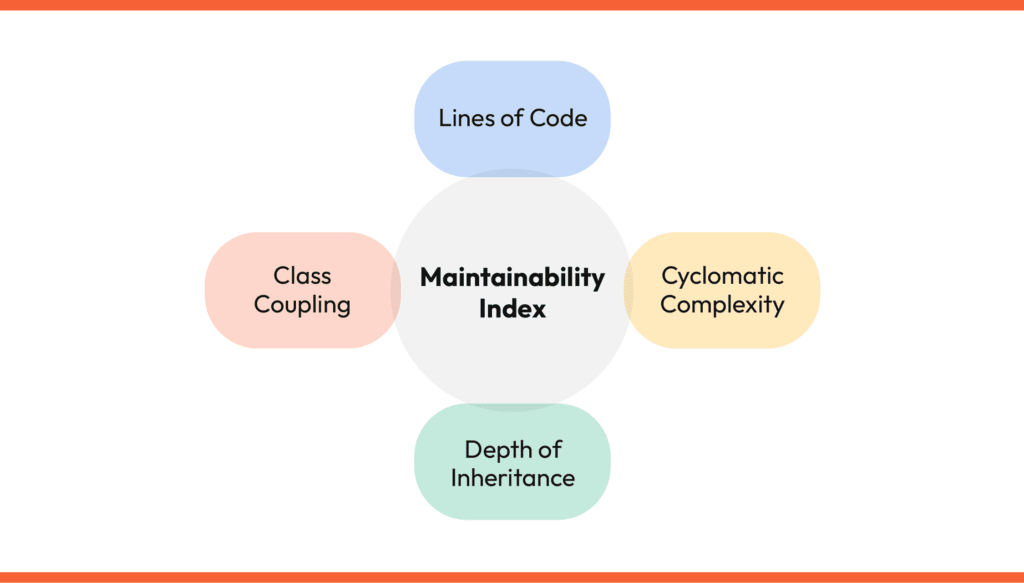Imagine you’re standing in front of a giant wall of televisions, each screen showing a different channel. You’ve got one remote control to navigate this noise. That’s what software complexity feels like—an overwhelming maze of interconnected parts that can make even the bravest developer want to run for the hills.
Software complexity is essentially the degree to which a system or component has a design or implementation that is difficult to understand and verify. In our world, we deal with two types of complexities: inherent and accidental.
Inherent (often called essential, too) complexity is natural; it comes with the territory when dealing with intricate systems and cannot be avoided. Accidental complexity, on the other hand, is person-made (we have only ourselves to blame here), resulting from poor design choices or over-engineering solutions.
Although inherent complexity can’t be avoided, we can make it approachable with proper documentation and intelligent design. Accidental? Well, that’s a choice, and one that we shouldn’t make lightly.
The Software Complexity Problem: An Overview
Complexity can make software harder to understand and maintain. It’s like trying to read a book written in an alien language—even if you manage to decode it, maintaining or modifying it becomes a Herculean task. This difficulty escalates exponentially with each additional layer of complexity, making changes riskier and more time-consuming.
Moreover, complexity increases the likelihood of bugs creeping into your code. Imagine you’re building a skyscraper (your software). Each floor represents a layer of functionality or feature (code). Now, if you’ve got 10 floors (simple software), spotting structural issues is relatively easy. But what happens when your skyscraper has 100 floors or more? Spotting those pesky structural problems becomes akin to finding a needle in a haystack.

Lastly, complex systems are harder to test thoroughly. Testing is crucial in ensuring that our software behaves as expected under different conditions. However, with each added layer of complexity comes an exponential increase in possible states the system could be in—making comprehensive testing nearly impossible.
Measuring Software Complexity: Essential Metrics
It’s crucial to arm ourselves with the right tools in order to tackle software complexity. After all, how can we tame a beast if we don’t know its size or nature? That’s where software complexity metrics come into play.
There are several key metrics that we should be keeping an eye on. Cyclomatic complexity, for instance, is one such metric that measures the number of linearly independent paths through a program’s source code. It’s like trying to navigate a maze, where each path represents a potential execution flow. A simple maze with few paths (low cyclomatic complexity) is easier to traverse and understand than a convoluted labyrinth teeming with countless twists and turns (high cyclomatic complexity).
Another important metric is Halstead Complexity Measures, which assesses the size and volume of your code based on operators and operands used. Think of it as assessing the weight and dimensions of your luggage before a flight.
Last, there’s the Maintainability Index—this one combines various other metrics like cyclomatic complexity, Halstead volume, and lines of code into one handy-dandy score. The higher the score, the easier your software is to maintain.

These metrics act as our compass in the wild terrain of software development, guiding us toward less complex and more manageable solutions. By monitoring these figures regularly, we can spot rising complexities early on and take necessary action before they spiral out of control.
Recognizing Symptoms of Software Complexity
It’s essential to identify the telltale signs of complexity early on. By doing so, we can nip the problem in the bud before it grows into a monstrous, budget-devouring beast.
One clear symptom is an increasing number of bugs that appear as new features are added. Each new feature adds more instability, leading to bugs that need urgent attention.
Another sign is when modifications become progressively challenging. If minor changes start feeling like pulling teeth from a disgruntled crocodile, then you’re dealing with complexity.
Finally, if your team spends more time deciphering code than writing it, you’ve got yourself a complexity conundrum. Code should be self-explanatory; if it resembles hieroglyphics more than a well-written novel, then it’s time for some serious de-complexifying.
The Consequences of Overly Complex Software
-
- Time: Complex software takes longer to understand, modify, and maintain. This means more hours spent by our development team, which directly translates into higher costs.
- Risk: With complexity comes increased probability for errors and bugs to sneak their way into our code. These can lead to system crashes or security vulnerabilities that could potentially cost us not just money, but also our reputation.
- Scalability: As your software grows more complex, it becomes increasingly difficult to add new features or make changes without disrupting existing functionalities.
- More Downtime and Higher Maintenance Cost: With more moving parts and unclear documentation, keeping the system running smoothly becomes an expensive endeavor.
Struggling with software complexity? Learn more about our custom software development services. We are ready to help.
Steps to Avoiding the Software Complexity Trap
The first step on this journey is embracing simplicity. This doesn’t mean dumbing down your code, but rather designing it in such a way that each component does one thing and does it well.
When we embrace simplicity in our architecture, we’re not just making life easier for ourselves. We’re also directly impacting our bottom line. How so? Well, consider the costs associated with fixing bugs. It’s no secret that debugging can be a time-consuming and expensive process. However, when we have a simplified, modular system, identifying and rectifying these pesky issues becomes significantly less daunting.
We encourage regular refactoring. This is akin to spring cleaning your code; you’re not changing the functionality, just making sure everything is neat and tidy.
Last, we advocate for comprehensive documentation. While writing comments might feel like writing love letters to future you (or others who dare venture into your code), they can be lifesavers when navigating complex systems.
Strategies for Software Simplification
- Modularity: By breaking down our software into smaller, independent modules (think LEGO blocks), we make it easier to understand, test, and maintain. Each module should do one thing and do it well.
- Abstraction: This is where we hide the complex details behind simpler interfaces. This way, we can focus on what the system does rather than how it does it.
- Encapsulation: This is all about hiding internal states and values within an object. This keeps our code clean and prevents unwanted tampering.
- Use of design patterns: These are tried-and-true solutions to common problems in software design. They provide a template for solving similar problems in the future without having to reinvent the wheel each time.
In short, by reducing complexity through thoughtful software design, we’re essentially streamlining our processes and increasing efficiency. Watch this video to learn more about managing complexity. It could come handy for your next software complexity challenge!
Leveraging DevOps to Minimize Complexity
This approach aims to shorten the system’s development life cycle and provide continuous delivery with high software quality.
Picture this: A relay race where each team member runs their part and then hands off the baton to the next runner. Traditional software development can sometimes feel like this, with developers passing on their work to the operations team (and often crossing their fingers that nothing breaks in transition).
Now imagine if those runners were running together instead, communicating and collaborating every step of the way. That’s DevOps for you! By fostering a culture of collaboration between teams that historically functioned in silos, we’re able to catch potential issues early on, reduce inefficiencies, and ensure smoother transitions.
Take automated testing, for instance. By integrating this into our continuous integration/continuous deployment (CI/CD) pipeline—a core component of DevOps —we ensure that any new piece of code is automatically tested before it’s merged with the main codebase. This not only helps us identify bugs earlier but also reduces manual effort (and let’s be honest, who doesn’t love a bit less manual labor?).
In essence, by leveraging DevOps, we’re effectively minimizing complexity through increased collaboration and automation.
Conclusion: Take Charge of Software Complexity
As we round off this exploration into the wilds of software complexity, it’s clear that the future of development is in our hands. We can either continue to wrestle with the monolithic monsters of old or embrace a more streamlined approach. The choice, as they say, is ours.
By choosing to adopt microservices and similar strategies, we’re not just opting for simplicity and cost efficiency; we’re taking control of our digital destiny.
In conclusion, while complexity may be an inherent part of software development, it doesn’t have to rule us. With strategic planning and smart design choices (like those mentioned above), we can avoid falling into the deadly trap of excessive complexity and instead reap the benefits of simpler, more efficient systems.
So let’s grab this opportunity by its binary horns! Let’s transform our software landscape from a tangled jungle into a well-organized garden.






